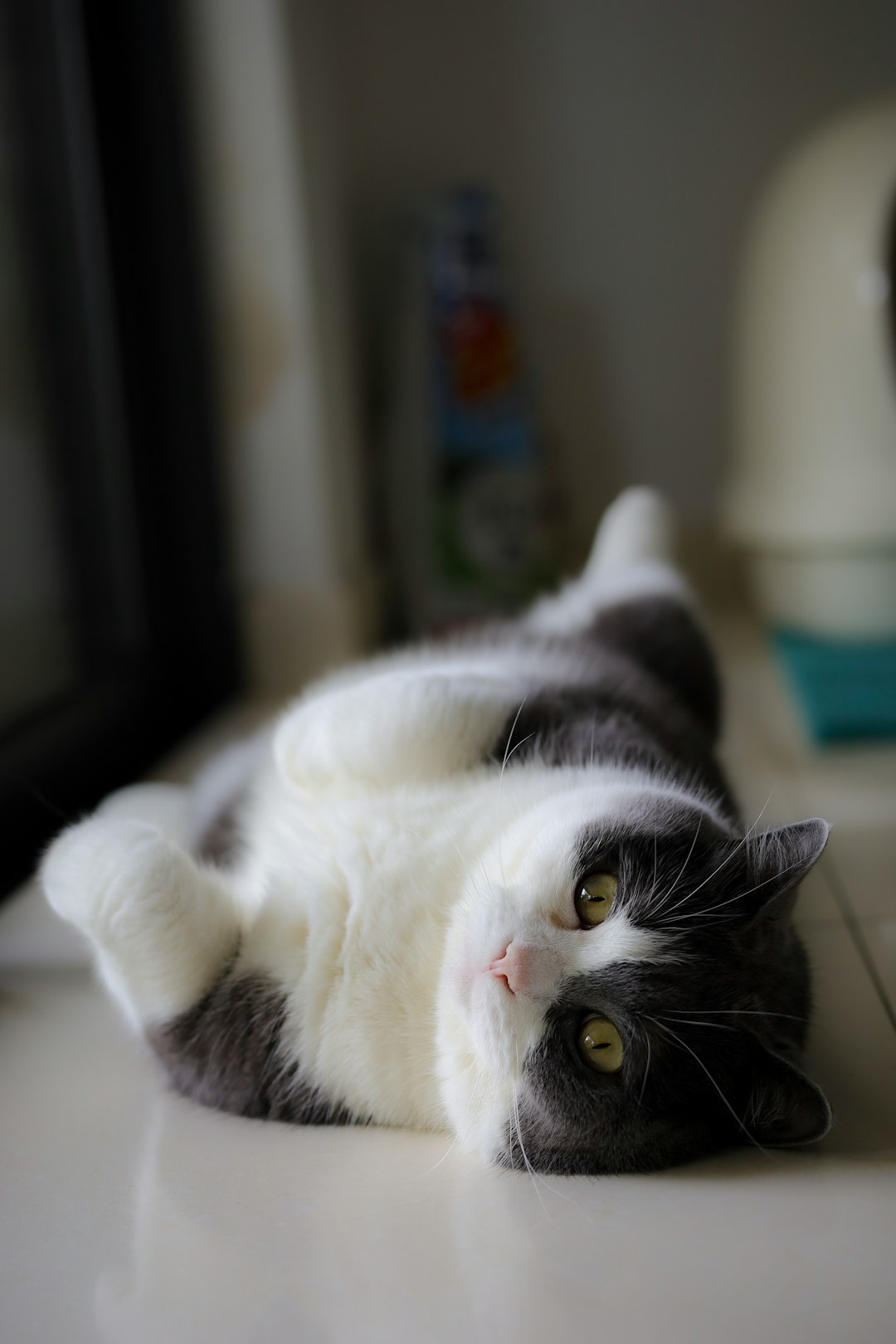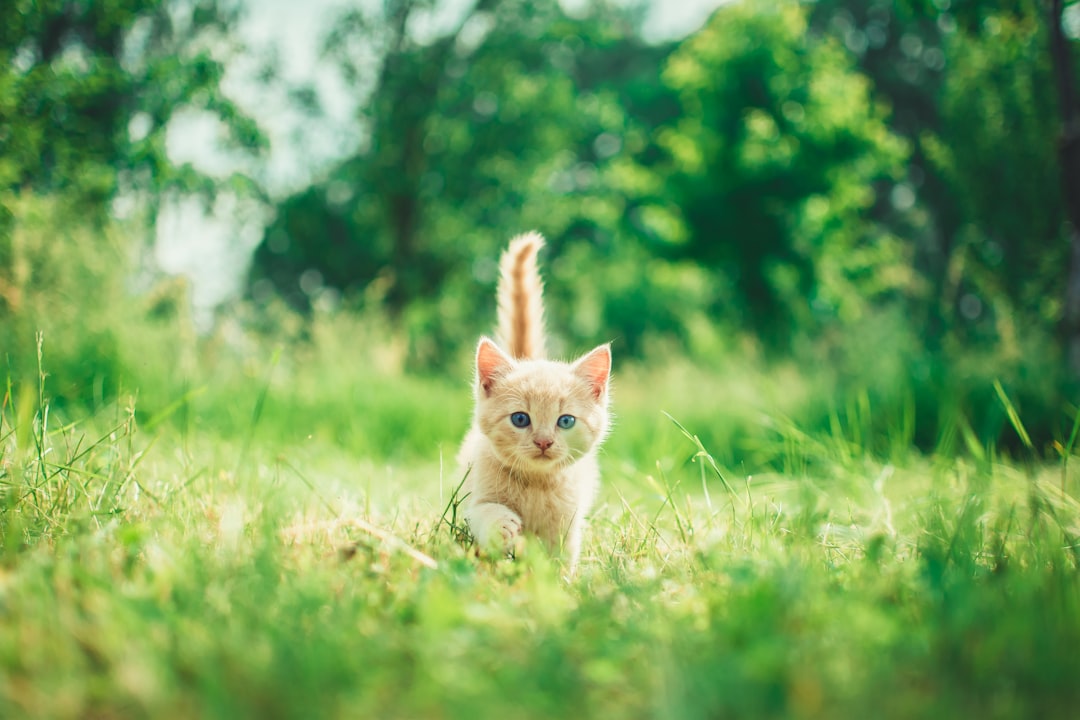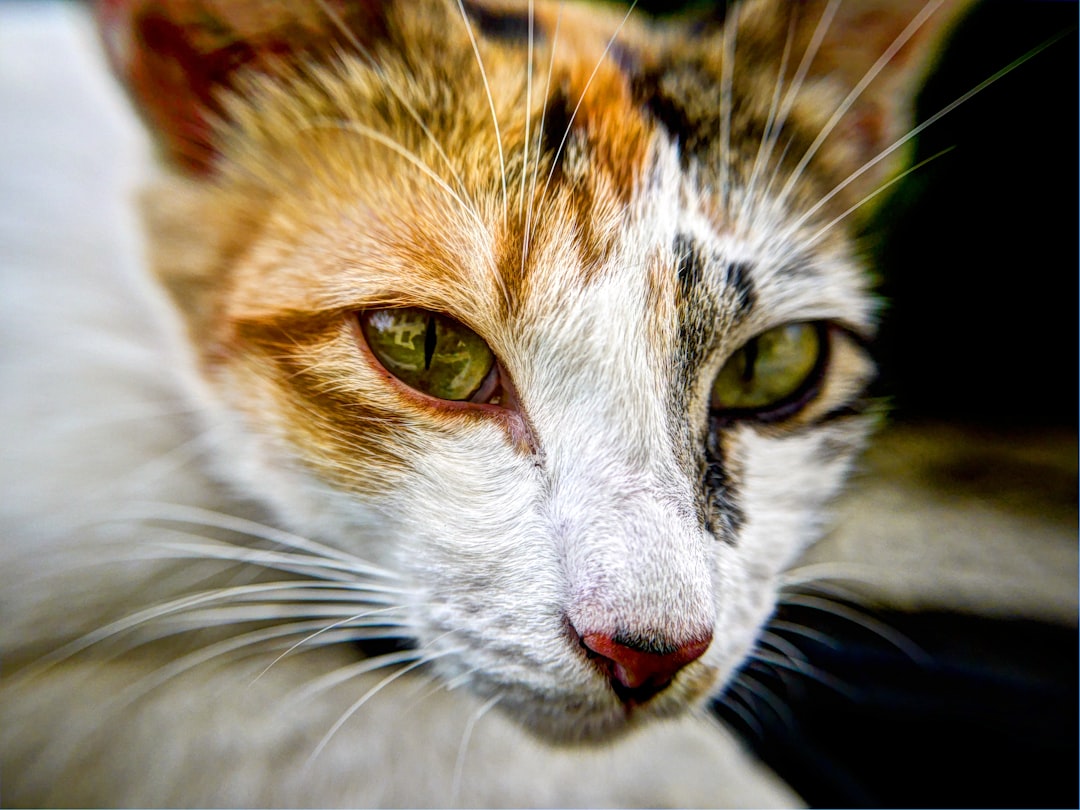Navigating the world of pet care can be especially challenging when your feline friend experiences anxiety and stress. Understanding why cats feel anxious and recognizing the signs can help you provide the support they need. Fortunately, there are effective solutions, including calming treats for cats, that can ease their worries and promote relaxation. In this blog post, we will explore the various types of calming treats available, from natural ingredients to homemade recipes, and commercial options. Additionally, we will discuss how to introduce these treats to your cat and other complementary strategies to foster a serene environment. Together, we can help your beloved pet lead a more relaxed and happy life.
Understanding Cat Anxiety and Stress
Cats, much like humans, can experience anxiety and stress that may affect their overall well-being and behavior. Understanding the root causes and recognizing the signs are essential for any cat owner looking to create a calming environment.
Common Causes of Anxiety in Cats
Several factors can lead to anxiety in cats. Here’s a concise overview:
| Cause | Description |
|---|---|
| Environmental Changes | Moving to a new home or rearranging furniture can unsettle your cat. |
| Loud Noises | Fireworks, thunderstorms, or vacuum cleaners can trigger fear. |
| Social Stress | Introducing new pets or guests can create tension. |
| Health Issues | Pain or medical conditions may cause behavioral changes that mimic anxiety. |
| Lack of Stimulus | A bored cat may exhibit anxiety if its environment lacks enrichment. |
Signs Your Cat is Stressed
Identifying the signs of stress is crucial to addressing your cat’s needs. Look for the following behaviors:
- Hiding: Retreating to secluded areas is a common sign of anxiety.
- Aggression: Increased irritability or aggressive behavior towards others can indicate distress.
- Excessive Grooming: Over-grooming can lead to bald patches and usually signifies stress.
- Litter Box Issues: Changes in bathroom habits often point toward anxiety or health concerns.
- Decreased Appetite: A loss of interest in food may reflect emotional turmoil.
Recognizing these signs early allows you to take proactive measures, making it easier to introduce calming treats for cats and improve their overall quality of life.
Calming Treats for Cats: An Overview
What Are Calming Treats?
Calming treats are specialized snacks designed to alleviate anxiety and stress in felines. These treats often contain natural ingredients that promote relaxation without causing sedation. Key components typically found in these products include:
- Herbal Extracts: Such as chamomile, valerian root, and lavender.
- Amino Acids: Like L-theanine and tryptophan, which help calm the mind.
- Probiotics: To support digestive health, indirectly improving mood.
These treats are an excellent way to incorporate soothing elements into a cat’s diet, especially during stressful situations like vet visits or moving homes.
How They Work to Reduce Stress
Calming treats operate through various mechanisms, specifically targeting your cat’s physiology. Here’s a brief overview of how they function:
| Mechanism | Description |
|---|---|
| Neurotransmitter Regulation | Ingredients like L-theanine help balance neurotransmitters, making cats feel more settled. |
| Reduction of Cortisol Levels | Some treats help lower stress hormone levels, resulting in a calmer demeanor. |
| Behavioral Association | Cats develop a positive association with the taste, creating a soothing experience through routine. |
When administered appropriately, these snacks can help your feline friend navigate stressful times, ensuring a more peaceful environment for both the pet and its owner. Offering these treats as a reward can also reinforce calm behavior, making them an effective tool for managing anxiety.
Natural Ingredients for Calming Treats
Herbs and Their Benefits
In the quest to create effective calming treats for cats, incorporating natural herbs can yield remarkable results. Here’s a quick list of some notable calming herbs for our furry friends:
- Valerian Root: Known for its sedative properties, it helps cats relax and may even encourage play.
- Catnip: A well-known favorite among many felines, it can promote relaxation and reduce anxiety.
- Chamomile: Not only soothing for humans, chamomile can help alleviate stress in cats, helping them unwind.
- Lavender: This fragrant herb is renowned for its calming effects and can help create a serene environment for your cat.
Essential Compounds in Calming Treats
When choosing or crafting calming treats for cats, consider including some essential compounds that target anxiety and stress directly. Below is a comparison of some beneficial ingredients commonly found in calming cat treats:
| Ingredient | Benefit | Source |
|---|---|---|
| L-Theanine | Promotes relaxation without drowsiness | Green tea extracts |
| Tryptophan | Precursor to serotonin, which improves mood | Turkey and chicken |
| Omega-3 Fatty Acids | Supports brain health and reduces anxiety | Fish oils |
| Magnesium | Assists in nerve function and anxiety reduction | Leafy greens and seeds |
By understanding and utilizing these natural ingredients, you can effectively create or select calming treats for cats that soothe your pet and help them cope with anxiety more efficiently.
Homemade Calming Treats for Cats
Creating your own calming treats can be a fun and rewarding experience that strengthens the bond between you and your feline friend. By using wholesome ingredients, you can make snacks that are not only healthy but also effective in reducing anxiety and stress. Below are some engaging recipes and essential tips to guide you through the process.
Easy Recipes to Try at Home
- Tuna and Catnip Bites
- Ingredients:
- 1 can of tuna in water, drained
- 1 cup whole wheat flour
- 1 tablespoon dried catnip
- 1 egg
- Instructions:
- Preheat your oven to 350°F (175°C).
- Mix all ingredients in a bowl until well combined.
- Roll the mixture into small balls and place them on a baking sheet.
- Bake for 10-12 minutes or until golden.
- Ingredients:
- Pumpkin Puree Treats
- Ingredients:
- 1 cup pumpkin puree (not pumpkin pie filling)
- 1 tablespoon olive oil
- 1 cup oat flour
- Instructions:
- Preheat your oven to 350°F (175°C).
- Combine all ingredients in a bowl to form a dough.
- Roll out the dough and cut into fun shapes.
- Bake for 15-20 minutes until firm.
- Ingredients:
Important Tips for Preparation
- Use Fresh Ingredients: Always choose fresh and high-quality ingredients to ensure your cat’s health and safety.
- Consider Allergies: Be wary of any ingredients that may trigger allergies in your cat.
- Storage: Store treats in an airtight container in the refrigerator. Homemade treats usually last about a week.
- Portion Control: Limit the number of treats to avoid overindulgence; typically, two to three treats a day are adequate.
By preparing these homemade calming bites, you’re not just providing a tasty treat for your cat but also fostering a relaxed environment that promotes well-being.
Commercial Calming Treats Options
When it comes to alleviating anxiety in cats, calming treats for cats can provide a convenient and effective solution. With numerous options available, it’s essential to choose the right product that aligns with your feline friend’s needs.
Top Brands to Consider
Here are some reputable brands known for their calming treats:
| Brand | Key Features |
|---|---|
| Pet Naturals | Contains a blend of calming herbs and amino acids. |
| Zesty Paws | Features L-Theanine and organic ingredients. |
| Vet’s Best | Infused with chamomile and passion flower. |
| Hill’s Science Diet | Vet-recommended with balanced nutrition. |
| Frisco | Affordable options that include calming extracts. |
What to Look for on Labels
When choosing calming treats, keep the following factors in mind:
- Active Ingredients: Look for compounds like L-Theanine, chamomile, or valerian root, known for their calming effects.
- Natural Formulas: Opt for treats made with natural ingredients to avoid additives that may cause adverse reactions.
- No Filling Agents: Ensure the treat has a high ratio of active ingredients to avoid unnecessary fillers.
- Age-Appropriateness: Check if the product is suitable for your cat’s age and weight to ensure safety.
- Veterinarian Approval: Select treats that have been recommended or approved by veterinarians for better reliability.
By considering these aspects, you can effectively choose the right calming treats for cats to help manage your pet’s anxiety and provide them with a more relaxed state of mind.
How to Introduce Calming Treats to Your Cat
Gradual Introduction Techniques
Introducing calming treats for cats requires a careful approach to ensure your feline friend adapts to them comfortably. Consider the following techniques:
- Start Small: Offer a tiny portion of the treat initially. This helps your cat become accustomed to the new flavor and texture.
- Mix with Favorite Foods: Combine the calming treat with your cat’s regular food or use it as a topping for their usual snacks. This can encourage them to eat the new treat without hesitation.
- Use Positive Reinforcement: Whenever your cat accepts the calming treat, provide verbal praise or a gentle pet. This reinforces good behavior and helps them look forward to mealtime.
Building a Positive Association
Creating a positive experience around the calming treats for cats is essential for long-term acceptance. Here are some effective strategies:
- Choose Calm Moments: Offer the treats during peaceful times, such as after play or when your cat is relaxed. This helps associate treats with positive states.
- Playtime Rewards: Use the treats as rewards after play sessions. This approach not only distracts from anxiety but also enhances their play experience.
- Consistent Routine: Administer the treats at the same time each day. A routine can make your cat feel more secure and less anxious about the new addition to their diet.
Introducing calming treats can significantly benefit your cat’s well-being when done thoughtfully. Patience and consistency are key!
Complementary Strategies to Calm Your Cat
Creating a Stress-Free Environment
Establishing a serene environment can significantly impact your cat’s overall well-being. Here are some strategies you can implement:
- Designated Safe Spaces: Provide a cozy nook where your cat can retreat when feeling overwhelmed. It could be a plush bed or a secluded corner lined with their favorite blanket.
- Enrichment Activities: Stimulate your cat’s mind with toys, scratching posts, and interactive games. Keeping them engaged helps alleviate boredom, which can be a source of anxiety.
- Consistent Routine: Cats thrive on routine. Feeding, playtime, and other daily activities should occur at the same times each day to help make your cat feel secure.
Other Calming Aids to Consider
In addition to calming treats for cats, several other calming aids can ease your feline’s stress. Here’s a list of options:
| Calming Aid | Description |
|---|---|
| Feliway Diffusers | Synthetic pheromones mimic cat facial pheromones to create a sense of security. |
| Calming Collars | Infused with calming agents, these collars release soothing scents that help reduce anxiety. |
| Herbal Remedies | Valerian and chamomile are natural options; however, consult your veterinarian before introducing them. |
| Massage and Grooming | Regular grooming not only strengthens the bond with your cat but also serves as a calming ritual. |
Implementing these strategies alongside calming treats for cats can create a more peaceful and balanced environment, ultimately making your cat feel safer and more secure.
Monitoring Your Cat’s Response to Treats
As you introduce calming treats for cats into your feline’s routine, understanding their response is vital to ensure effectiveness and safety. Monitoring their behavior can help you identify any positive changes or potential concerns.
Signs of Improvement
When you administer these treats, watch for the following signs indicating reduced anxiety and stress:
- Calmer Behavior: Observe if your cat exhibits less pacing, hiding, or excessive vocalization.
- Increased Relaxation: Notice if your cat becomes more willing to lounge and engage in leisurely activities.
- Positive Interactions: Look for signs of socialization, such as approaching you for affection or playing more often.
- Eating Regularly: A healthy appetite might suggest the treats are helping your cat feel more secure.
| Sign | Description |
|---|---|
| Calmer Behavior | Reduced pacing and hiding |
| Increased Relaxation | Better willingness to relax or nap |
| Positive Interactions | More social behavior and affectionate gestures |
| Eating Regularly | Consistent desire for food, showing a relaxed appetite |
When to Consult a Veterinarian
If you observe any of the following concerns, it’s best to consult with your veterinarian:
- No Change: If there are no noticeable improvements within a few weeks.
- Adverse Reactions: Signs of nausea, vomiting, or diarrhea following treat consumption.
- Increased Anxiety: Worsening behavior patterns, such as excessive hiding or aggression.
- Existing Health Issues: If your cat has other health concerns that could be influencing their stress levels.
By carefully monitoring your cat’s response to calming treats for cats, you can provide essential insights that help maintain their well-being.
Final Thoughts on Calming Treats for Cats
Long-Term Benefits of Calming Treats
While calming treats for cats can be beneficial for immediate stress relief, their long-term use can also promote a more balanced emotional state for your feline friend. Consistently providing these treats may lead to:
- Reduced Anxiety Levels: Regular usage helps in lowering overall stress and anxiety.
- Improved Behavior: Cats may exhibit fewer signs of aggression or nervousness, leading to better interactions with both humans and other pets.
- Enhanced Bonding: Treat time can become a positive experience that fosters a stronger connection between you and your cat.
Encouraging a Relaxed Lifestyle
In addition to utilizing calming treats, it’s essential to encourage a lifestyle that promotes relaxation. Here are several strategies to consider:
- Create a Safe Space: Designate a quiet area with comfortable bedding where your cat can retreat during stressful times.
- Interactive Playtime: Engage your cat in regular, stimulating play sessions that help reduce anxiety through exercise.
- Consistent Routine: Establish feeding and play schedules to create predictability, which can alleviate stress.
By incorporating these strategies alongside calming treats for cats, you can help ensure a happy and stress-free environment for your beloved pet.
Frequently Asked Questions
What are calming treats for cats and how do they work?
Calming treats for cats are specially formulated snacks designed to help reduce anxiety and stress in felines. These treats usually contain natural ingredients such as valerian root, chamomile, or L-theanine, which are known for their soothing properties. When ingested, these ingredients can help promote relaxation, alleviate nervousness during stressful situations like thunderstorms, vet visits, or moving to a new home, and generally create a sense of well-being in your cat.
Are calming treats safe for all cats?
While most calming treats are safe for cats, it’s important to check the ingredients and consult with your veterinarian to ensure they are appropriate for your specific pet. Some cats may have allergies or sensitivities to certain ingredients. Additionally, if your cat is on medication or has underlying health conditions, discussing the use of calming treats with your vet will help determine if they are a safe option and how to incorporate them effectively into your cat’s routine.
How often can I give my cat calming treats?
The recommended frequency for giving calming treats to cats varies depending on the specific product and your cat’s needs. Generally, it’s advisable to follow the guidelines provided by the manufacturer regarding dosage and frequency. Most calming treats can be given as needed, particularly before a stressful event, but it’s crucial not to exceed the recommended amount to avoid potential side effects. If you find yourself needing to administer treats regularly, consult your veterinarian to explore underlying causes for your cat’s anxiety.
Can I use calming treats in conjunction with other anxiety relief methods?
Yes, you can use calming treats in conjunction with other anxiety relief methods, such as pheromone diffusers, tranquil music, or behavioral training techniques. However, it’s essential to monitor how your cat responds to this combination of approaches. If you’re considering multiple methods to help relieve your cat’s anxiety, it may be helpful to discuss your plans with a veterinarian or a professional animal behaviorist to create the most effective strategy tailored to your cat’s individual needs.
What should I look for when choosing calming treats for my cat?
When selecting calming treats for your cat, opt for products with natural, non-toxic ingredients known for their calming effects, such as chamomile or L-theanine. Check the absence of artificial additives, preservatives, and fillers, as these can be harmful to your pet. Additionally, consider your cat’s dietary restrictions or allergies, and look for treats specifically labeled for anxiety relief. Reviews and recommendations from veterinarians or fellow pet owners can also provide valuable insights into effective products.



